Neil Birkbeck
CP-LLM: Context and Pixel Aware Large Language Model for Video Quality Assessment
May 21, 2025Abstract:Video quality assessment (VQA) is a challenging research topic with broad applications. Effective VQA necessitates sensitivity to pixel-level distortions and a comprehensive understanding of video context to accurately determine the perceptual impact of distortions. Traditional hand-crafted and learning-based VQA models mainly focus on pixel-level distortions and lack contextual understanding, while recent LLM-based models struggle with sensitivity to small distortions or handle quality scoring and description as separate tasks. To address these shortcomings, we introduce CP-LLM: a Context and Pixel aware Large Language Model. CP-LLM is a novel multimodal LLM architecture featuring dual vision encoders designed to independently analyze perceptual quality at both high-level (video context) and low-level (pixel distortion) granularity, along with a language decoder subsequently reasons about the interplay between these aspects. This design enables CP-LLM to simultaneously produce robust quality scores and interpretable quality descriptions, with enhanced sensitivity to pixel distortions (e.g. compression artifacts). The model is trained via a multi-task pipeline optimizing for score prediction, description generation, and pairwise comparisons. Experiment results demonstrate that CP-LLM achieves state-of-the-art cross-dataset performance on established VQA benchmarks and superior robustness to pixel distortions, confirming its efficacy for comprehensive and practical video quality assessment in real-world scenarios.
Rate-Distortion Optimization with Non-Reference Metrics for UGC Compression
May 21, 2025Abstract:Service providers must encode a large volume of noisy videos to meet the demand for user-generated content (UGC) in online video-sharing platforms. However, low-quality UGC challenges conventional codecs based on rate-distortion optimization (RDO) with full-reference metrics (FRMs). While effective for pristine videos, FRMs drive codecs to preserve artifacts when the input is degraded, resulting in suboptimal compression. A more suitable approach used to assess UGC quality is based on non-reference metrics (NRMs). However, RDO with NRMs as a measure of distortion requires an iterative workflow of encoding, decoding, and metric evaluation, which is computationally impractical. This paper overcomes this limitation by linearizing the NRM around the uncompressed video. The resulting cost function enables block-wise bit allocation in the transform domain by estimating the alignment of the quantization error with the gradient of the NRM. To avoid large deviations from the input, we add sum of squared errors (SSE) regularization. We derive expressions for both the SSE regularization parameter and the Lagrangian, akin to the relationship used for SSE-RDO. Experiments with images and videos show bitrate savings of more than 30\% over SSE-RDO using the target NRM, with no decoder complexity overhead and minimal encoder complexity increase.
An Ensemble Approach to Short-form Video Quality Assessment Using Multimodal LLM
Dec 24, 2024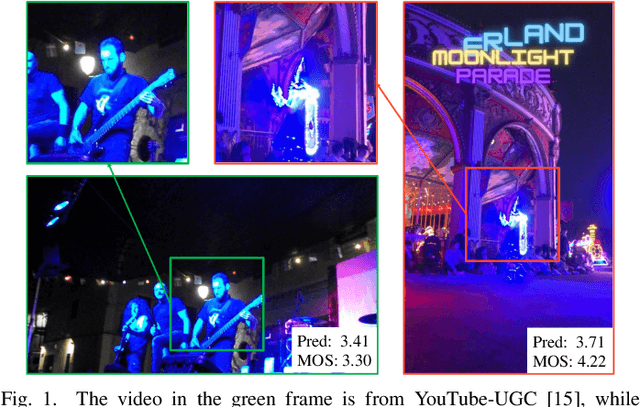
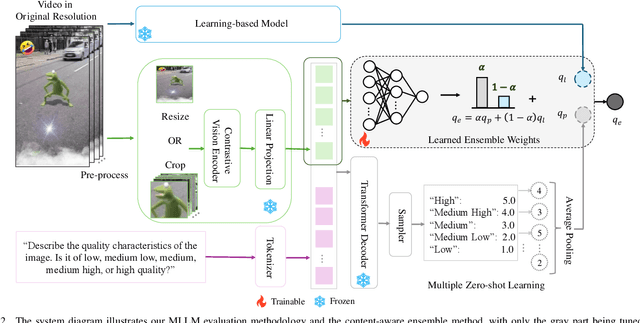
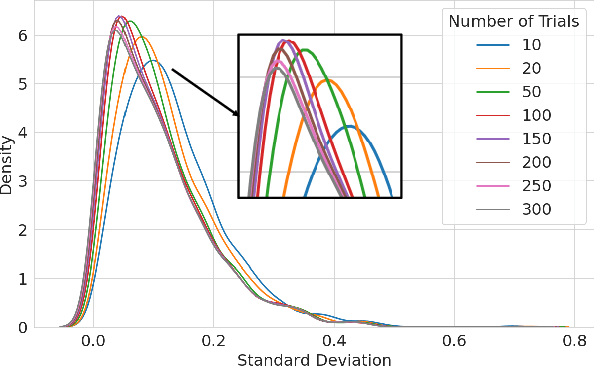
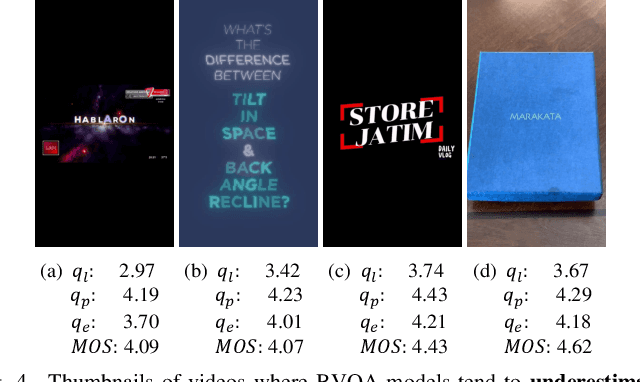
Abstract:The rise of short-form videos, characterized by diverse content, editing styles, and artifacts, poses substantial challenges for learning-based blind video quality assessment (BVQA) models. Multimodal large language models (MLLMs), renowned for their superior generalization capabilities, present a promising solution. This paper focuses on effectively leveraging a pretrained MLLM for short-form video quality assessment, regarding the impacts of pre-processing and response variability, and insights on combining the MLLM with BVQA models. We first investigated how frame pre-processing and sampling techniques influence the MLLM's performance. Then, we introduced a lightweight learning-based ensemble method that adaptively integrates predictions from the MLLM and state-of-the-art BVQA models. Our results demonstrated superior generalization performance with the proposed ensemble approach. Furthermore, the analysis of content-aware ensemble weights highlighted that some video characteristics are not fully represented by existing BVQA models, revealing potential directions to improve BVQA models further.
YouTube SFV+HDR Quality Dataset
Jun 08, 2024
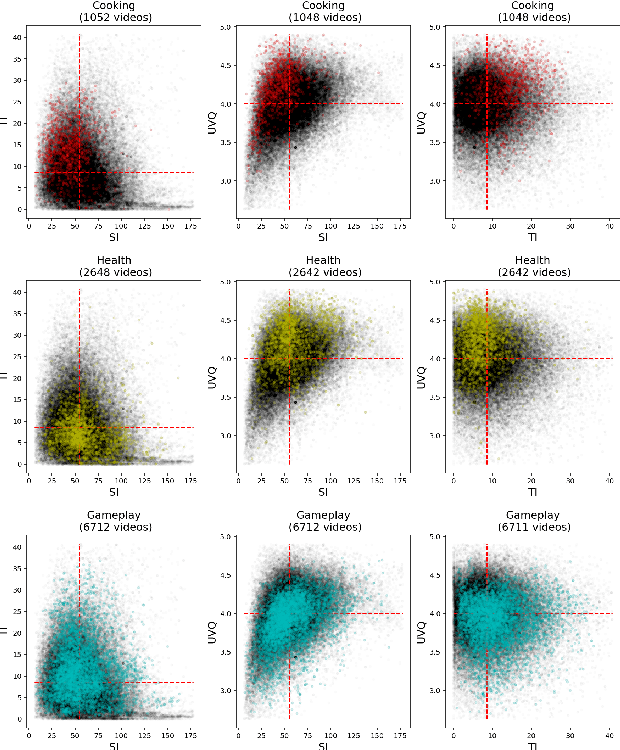


Abstract:The popularity of Short form videos (SFV) has grown dramatically in the past few years, and has become a phenomenal video category with billions of viewers. Meanwhile, High Dynamic Range (HDR) as an advanced feature also becomes more and more popular on video sharing platforms. As a hot topic with huge impact, SFV and HDR bring new questions to video quality research: 1) is SFV+HDR quality assessment significantly different from traditional User Generated Content (UGC) quality assessment? 2) do objective quality metrics designed for traditional UGC still work well for SFV+HDR? To answer the above questions, we created the first large scale SFV+HDR dataset with reliable subjective quality scores, covering 10 popular content categories. Further, we also introduce a general sampling framework to maximize the representativeness of the dataset. We provided a comprehensive analysis of subjective quality scores for Short form SDR and HDR videos, and discuss the reliability of state-of-the-art UGC quality metrics and potential improvements.
Direct Optimisation of $\boldsymbolλ$ for HDR Content Adaptive Transcoding in AV1
Aug 23, 2022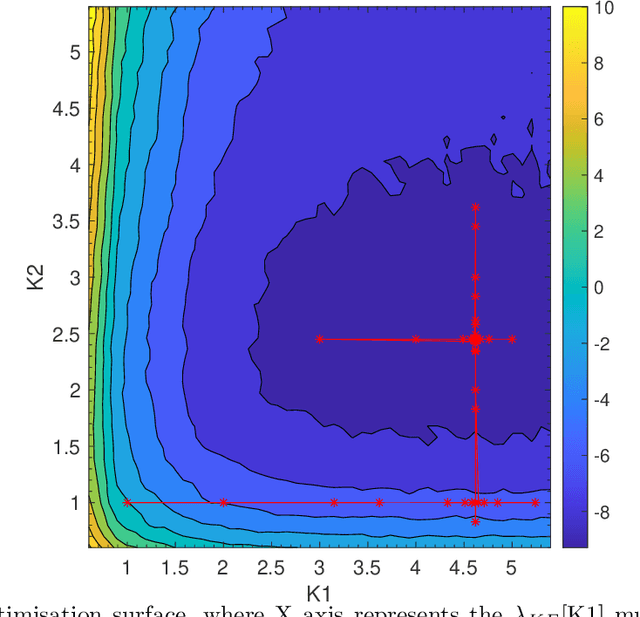

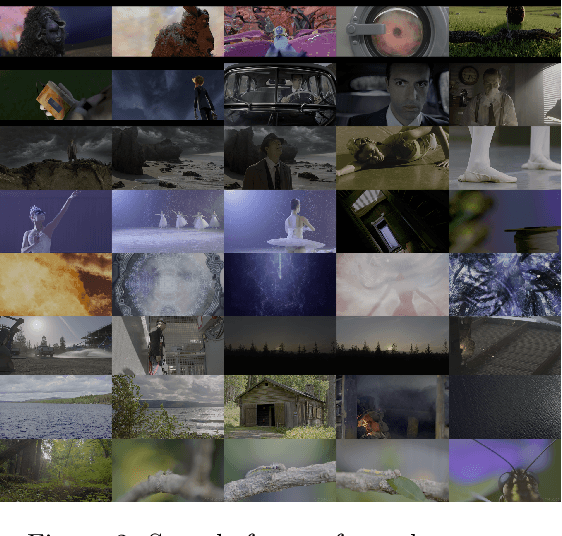

Abstract:Since the adoption of VP9 by Netflix in 2016, royalty-free coding standards continued to gain prominence through the activities of the AOMedia consortium. AV1, the latest open source standard, is now widely supported. In the early years after standardisation, HDR video tends to be under served in open source encoders for a variety of reasons including the relatively small amount of true HDR content being broadcast and the challenges in RD optimisation with that material. AV1 codec optimisation has been ongoing since 2020 including consideration of the computational load. In this paper, we explore the idea of direct optimisation of the Lagrangian $\lambda$ parameter used in the rate control of the encoders to estimate the optimal Rate-Distortion trade-off achievable for a High Dynamic Range signalled video clip. We show that by adjusting the Lagrange multiplier in the RD optimisation process on a frame-hierarchy basis, we are able to increase the Bjontegaard difference rate gains by more than 3.98$\times$ on average without visually affecting the quality.
CONVIQT: Contrastive Video Quality Estimator
Jun 29, 2022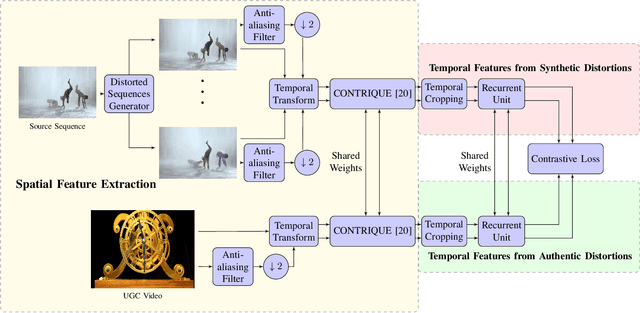
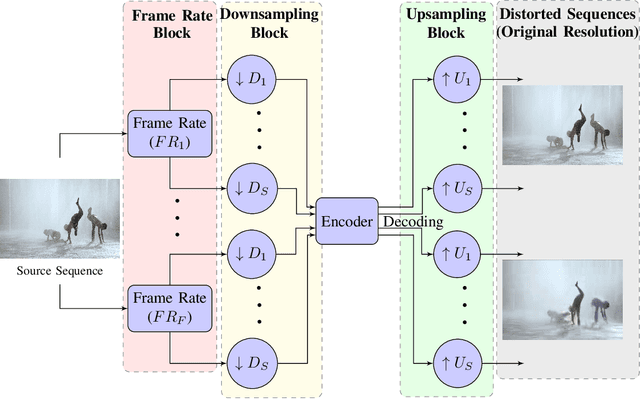
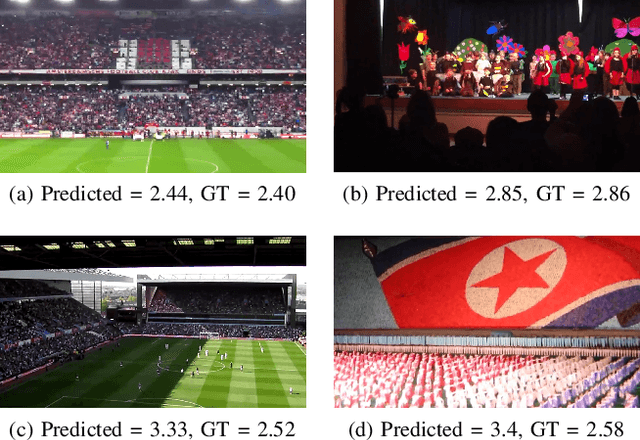
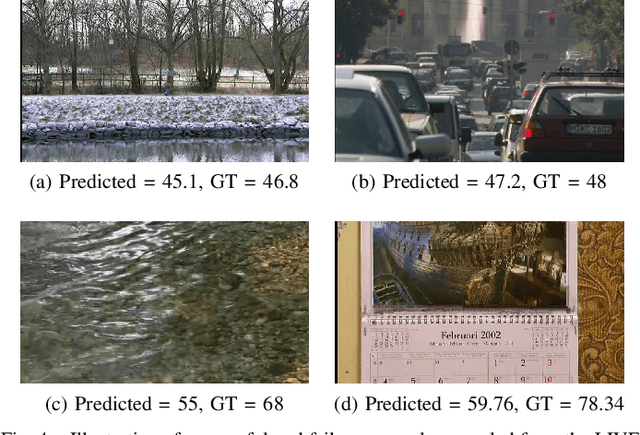
Abstract:Perceptual video quality assessment (VQA) is an integral component of many streaming and video sharing platforms. Here we consider the problem of learning perceptually relevant video quality representations in a self-supervised manner. Distortion type identification and degradation level determination is employed as an auxiliary task to train a deep learning model containing a deep Convolutional Neural Network (CNN) that extracts spatial features, as well as a recurrent unit that captures temporal information. The model is trained using a contrastive loss and we therefore refer to this training framework and resulting model as CONtrastive VIdeo Quality EstimaTor (CONVIQT). During testing, the weights of the trained model are frozen, and a linear regressor maps the learned features to quality scores in a no-reference (NR) setting. We conduct comprehensive evaluations of the proposed model on multiple VQA databases by analyzing the correlations between model predictions and ground-truth quality ratings, and achieve competitive performance when compared to state-of-the-art NR-VQA models, even though it is not trained on those databases. Our ablation experiments demonstrate that the learned representations are highly robust and generalize well across synthetic and realistic distortions. Our results indicate that compelling representations with perceptual bearing can be obtained using self-supervised learning. The implementations used in this work have been made available at https://github.com/pavancm/CONVIQT.
Making Video Quality Assessment Models Sensitive to Frame Rate Distortions
May 21, 2022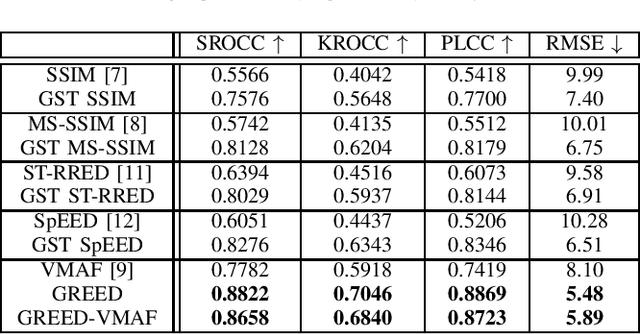


Abstract:We consider the problem of capturing distortions arising from changes in frame rate as part of Video Quality Assessment (VQA). Variable frame rate (VFR) videos have become much more common, and streamed videos commonly range from 30 frames per second (fps) up to 120 fps. VFR-VQA offers unique challenges in terms of distortion types as well as in making non-uniform comparisons of reference and distorted videos having different frame rates. The majority of current VQA models require compared videos to be of the same frame rate, but are unable to adequately account for frame rate artifacts. The recently proposed Generalized Entropic Difference (GREED) VQA model succeeds at this task, using natural video statistics models of entropic differences of temporal band-pass coefficients, delivering superior performance on predicting video quality changes arising from frame rate distortions. Here we propose a simple fusion framework, whereby temporal features from GREED are combined with existing VQA models, towards improving model sensitivity towards frame rate distortions. We find through extensive experiments that this feature fusion significantly boosts model performance on both HFR/VFR datasets as well as fixed frame rate (FFR) VQA databases. Our results suggest that employing efficient temporal representations can result much more robust and accurate VQA models when frame rate variations can occur.
Perceptual Quality Assessment of UGC Gaming Videos
Apr 13, 2022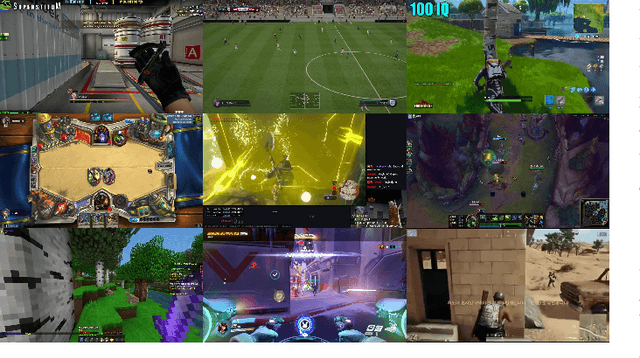
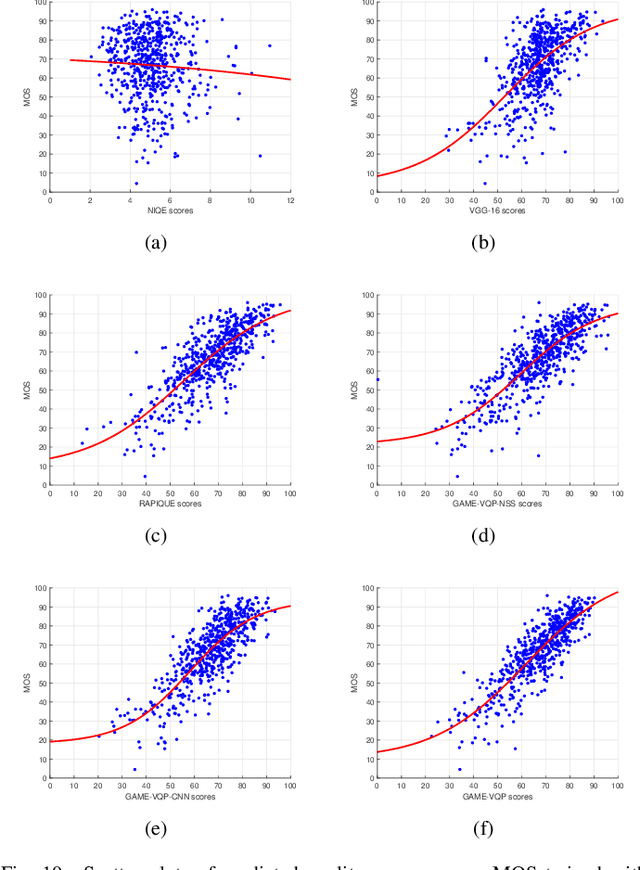
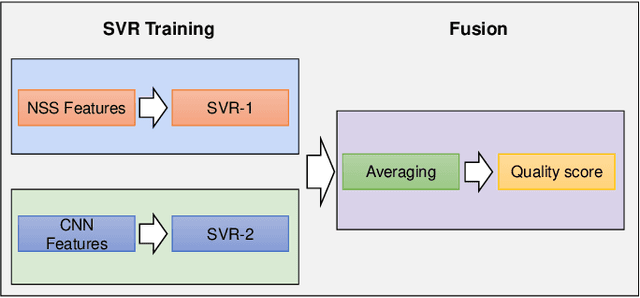

Abstract:In recent years, with the vigorous development of the video game industry, the proportion of gaming videos on major video websites like YouTube has dramatically increased. However, relatively little research has been done on the automatic quality prediction of gaming videos, especially on those that fall in the category of "User-Generated-Content" (UGC). Since current leading general-purpose Video Quality Assessment (VQA) models do not perform well on this type of gaming videos, we have created a new VQA model specifically designed to succeed on UGC gaming videos, which we call the Gaming Video Quality Predictor (GAME-VQP). GAME-VQP successfully predicts the unique statistical characteristics of gaming videos by drawing upon features designed under modified natural scene statistics models, combined with gaming specific features learned by a Convolution Neural Network. We study the performance of GAME-VQP on a very recent large UGC gaming video database called LIVE-YT-Gaming, and find that it both outperforms other mainstream general VQA models as well as VQA models specifically designed for gaming videos. The new model will be made public after paper being accepted.
Subjective and Objective Analysis of Streamed Gaming Videos
Mar 24, 2022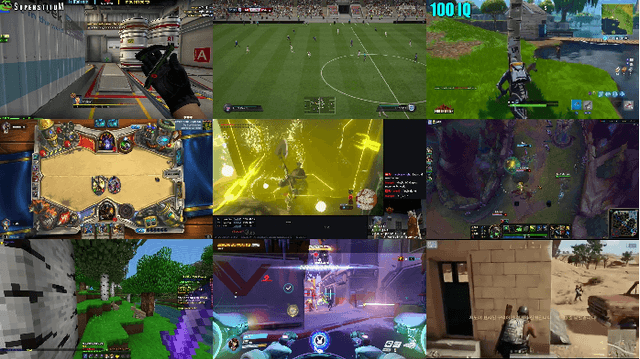
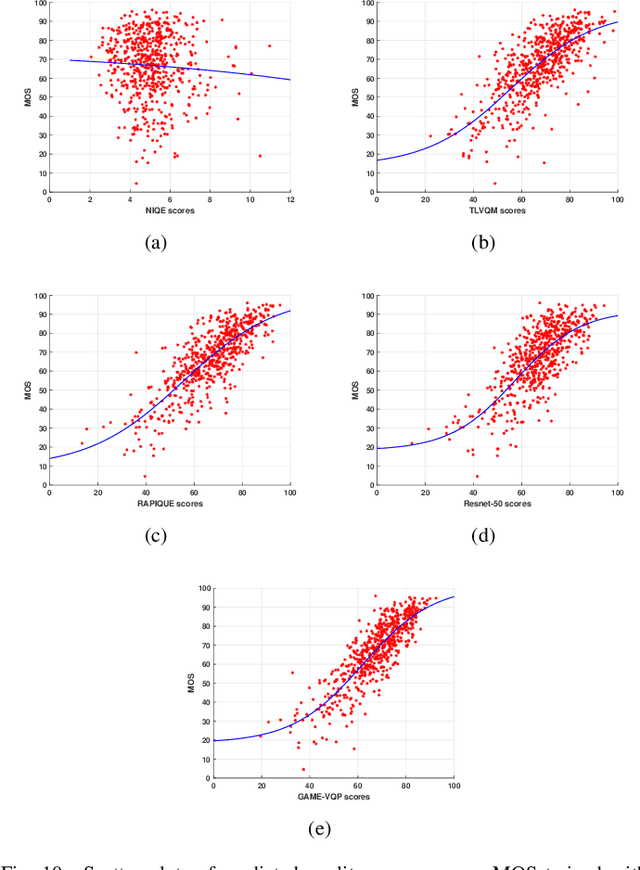
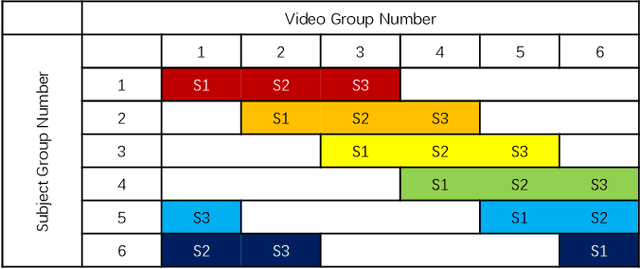

Abstract:The rising popularity of online User-Generated-Content (UGC) in the form of streamed and shared videos, has hastened the development of perceptual Video Quality Assessment (VQA) models, which can be used to help optimize their delivery. Gaming videos, which are a relatively new type of UGC videos, are created when skilled gamers post videos of their gameplay. These kinds of screenshots of UGC gameplay videos have become extremely popular on major streaming platforms like YouTube and Twitch. Synthetically-generated gaming content presents challenges to existing VQA algorithms, including those based on natural scene/video statistics models. Synthetically generated gaming content presents different statistical behavior than naturalistic videos. A number of studies have been directed towards understanding the perceptual characteristics of professionally generated gaming videos arising in gaming video streaming, online gaming, and cloud gaming. However, little work has been done on understanding the quality of UGC gaming videos, and how it can be characterized and predicted. Towards boosting the progress of gaming video VQA model development, we conducted a comprehensive study of subjective and objective VQA models on UGC gaming videos. To do this, we created a novel UGC gaming video resource, called the LIVE-YouTube Gaming video quality (LIVE-YT-Gaming) database, comprised of 600 real UGC gaming videos. We conducted a subjective human study on this data, yielding 18,600 human quality ratings recorded by 61 human subjects. We also evaluated a number of state-of-the-art (SOTA) VQA models on the new database, including a new one, called GAME-VQP, based on both natural video statistics and CNN-learned features. To help support work in this field, we are making the new LIVE-YT-Gaming Database, publicly available through the link: https://live.ece.utexas.edu/research/LIVE-YT-Gaming/index.html .
Image Quality Assessment using Contrastive Learning
Oct 25, 2021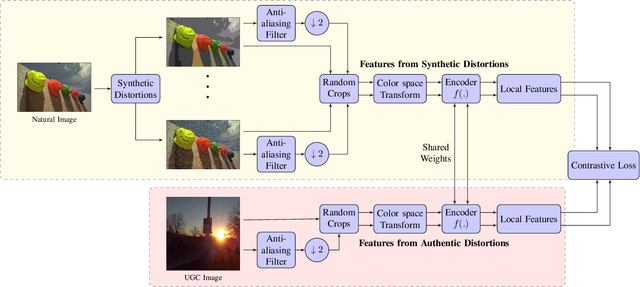
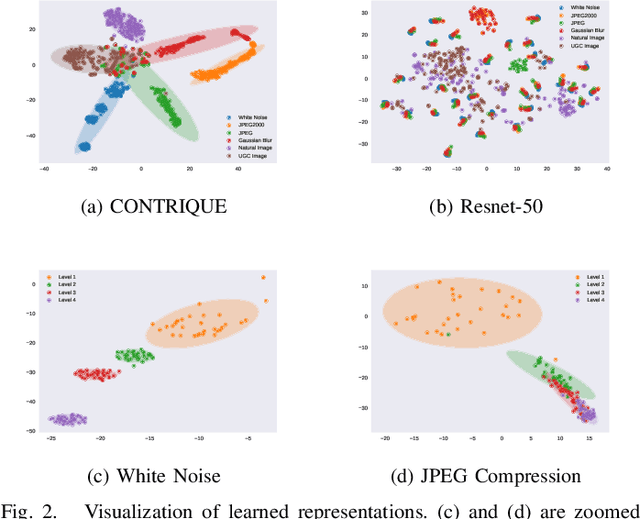


Abstract:We consider the problem of obtaining image quality representations in a self-supervised manner. We use prediction of distortion type and degree as an auxiliary task to learn features from an unlabeled image dataset containing a mixture of synthetic and realistic distortions. We then train a deep Convolutional Neural Network (CNN) using a contrastive pairwise objective to solve the auxiliary problem. We refer to the proposed training framework and resulting deep IQA model as the CONTRastive Image QUality Evaluator (CONTRIQUE). During evaluation, the CNN weights are frozen and a linear regressor maps the learned representations to quality scores in a No-Reference (NR) setting. We show through extensive experiments that CONTRIQUE achieves competitive performance when compared to state-of-the-art NR image quality models, even without any additional fine-tuning of the CNN backbone. The learned representations are highly robust and generalize well across images afflicted by either synthetic or authentic distortions. Our results suggest that powerful quality representations with perceptual relevance can be obtained without requiring large labeled subjective image quality datasets. The implementations used in this paper are available at \url{https://github.com/pavancm/CONTRIQUE}.
 Add to Chrome
Add to Chrome Add to Firefox
Add to Firefox Add to Edge
Add to Edge